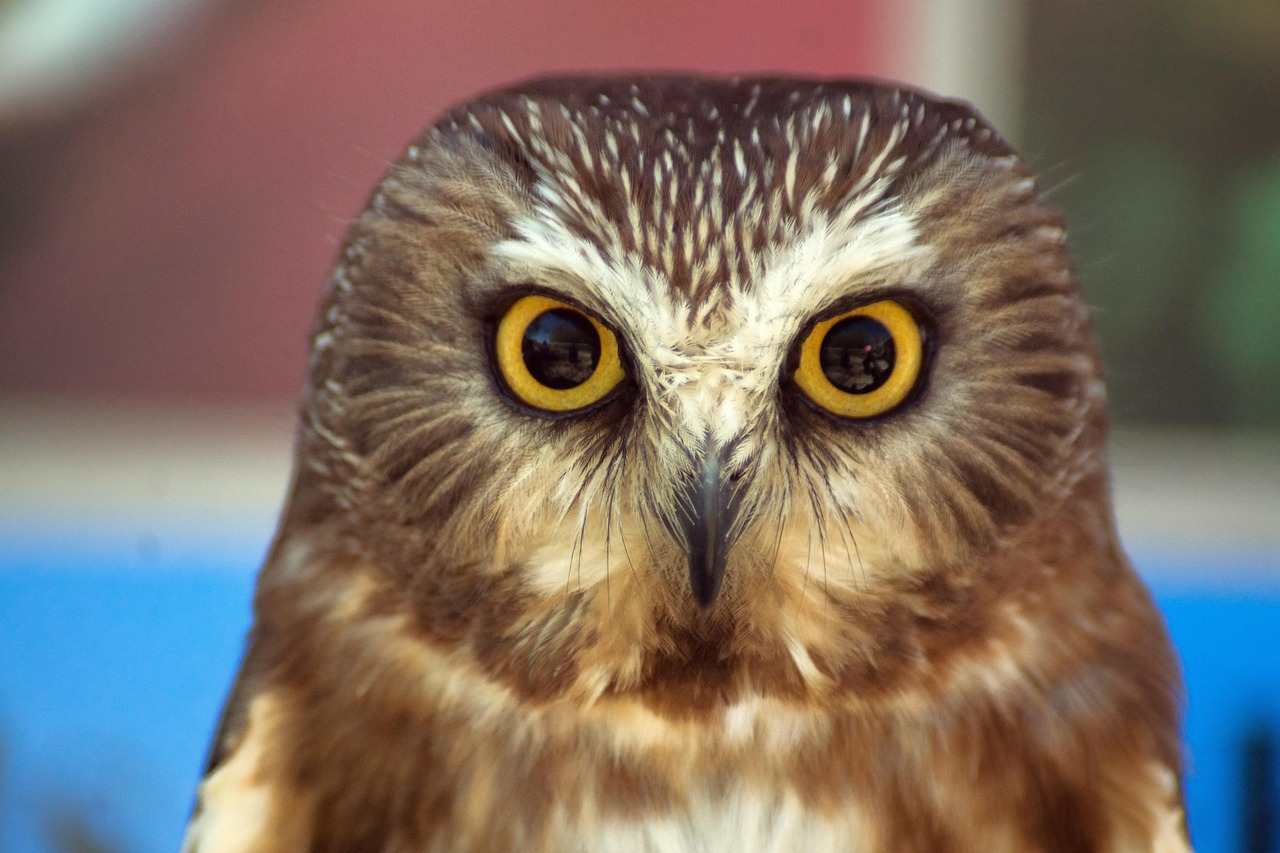When North American birders think of a “Saw-whet Owl,” they picture the common, widespread Northern Saw-whet: a tiny, adorable owl with a big head, piercing yellow eyes, and a breast streaked with brown. It’s a bird that, while nocturnal, is well-studied and familiar to many.
But North America holds a ghost.
Hiding in the high-elevation, mist-shrouded cloud forests of Mexico and Central America lives its cousin: the Unspotted Saw-whet Owl (Aegolius ridgwayi). It is one of the most secretive, mysterious, and rarely-seen birds on the continent. This is not the owl from your backyard; this is a tiny night hunter of the remote mountains, an enigma that scientists are still working to understand.
Here’s why this elusive bird is so fascinating.
1. What Does “Unspotted” Even Mean?
The name says it all. The most obvious difference between this bird and its famous northern relative is its plumage. While the Northern Saw-whet is heavily streaked and spotted with white, the adult Unspotted Saw-whet is a smooth, rich, unpatterned brown or buffy-brown on its head and back.
It lacks the white “spots” that give its cousin its “spotted” look. This clean, uniform plumage helps it blend perfectly into the dark, dense foliage of its high-altitude home. Like its relative, it’s tiny—barely 7-8 inches tall, about the size of a soda can—and has those same disproportionately large, haunting yellow eyes that allow it to pierce the darkness.
2. A Ghost of the Cloud Forests
You won’t find this owl in the lowland deserts or coastal plains. The Unspotted Saw-whet Owl is an extreme specialist, a true high-altitude hunter. It lives almost exclusively in cool, humid, high-elevation forests, typically between 5,000 and 10,000 feet.
Its preferred habitat includes:
- Pine-oak forests
- Humid fir forests
- Mist-shrouded cloud forests
This remote, often inaccessible terrain is one of the main reasons the bird is so rarely encountered. It spends its life in the canopy of these misty, mountain forests, a true ghost of the highlands.
3. The Classic “Saw-Whet” Call
So, how does it get the “Saw-whet” name? Like its northern cousin, it gets its name from its call. The sound is a monotonous, rhythmic, tooting whistle that repeats at regular intervals. Some say it sounds like the “skri-saw” sound of a saw being sharpened on a whetstone.
This is the main way researchers find them. On a dark night in a Mexican cloud forest, the only sign of this bird’s existence is its haunting, two-note call echoing through the mist.
4. A True Night Hunter
This owl is a “secretive night hunter” in every sense. It is strictly nocturnal, emerging from its daytime roost only in complete darkness. It is a “sit-and-wait” predator, perching silently on a branch and using its incredible hearing and eyesight to locate prey on the forest floor.
Its diet is believed to consist mainly of:
- Large insects (like beetles and moths)
- Shrews
- Small rodents
Like other owls, its feathers are designed with soft, fringe-like edges that muffle the sound of its flight, allowing it to drop on unsuspecting prey in absolute silence.
5. One of North America’s Least-Known Birds
Despite being named in 1887, the Unspotted Saw-whet Owl remains one of the most poorly understood birds on the continent. Its remote habitat, strictly nocturnal habits, and non-migratory nature mean it’s incredibly difficult to study.
For decades, almost nothing was known about its basic life history. Its nest wasn’t even discovered and scientifically described until 1999! We are still learning about its exact population, its breeding habits, and its full range. This elusiveness makes any sighting a true “bucket list” experience for researchers and birders.
Quick Facts: The Ghost Owl
- Scientific Name: Aegolius ridgwayi
- Size: 7-8 inches (18-21 cm)
- Habitat: High-elevation pine-oak and cloud forests in Mexico and Central America.
- Key Feature: Smooth, unspotted brown back and head (in adults).
- Status: Considered “Least Concern” but populations are difficult to monitor.
Conclusion: A Hidden Treasure
The Unspotted Saw-whet Owl is a perfect example of the secrets our planet still holds. It’s a reminder that even in a continent as well-explored as North America, there are still mysterious, beautiful creatures living quiet lives far from our own. It is a silent hunter, a ghostly voice in the clouds, and a true treasure of the high mountain forests.
Have you ever been lucky enough to hear a saw-whet owl in the wild? Share your experience in the comments below!


